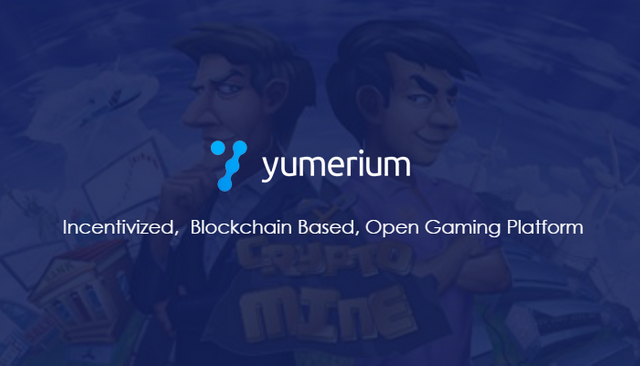Yumerium — Taking a Look at the Roadmap for “Play to Earn” Video Game Platform

Yumerium is a new blockchain project that is having its token sale at the moment. Basically they want to allow people to earn cryptocurrency by playing, sharing and reviewing video games.
Today I want to take a closer look at the Roadmap for Yumerium and discover how far they are in terms of developing their plans and what is to come in the future.
Looking at the roadmap is one of the most important aspects of any ICO because it tells what stage a company is at. Some companies may still be a year or more away from launching their actual product, whereas others have theirs already made and are good to go once the ICO is over.
It is the ones who can hit the ground running and carry momentum forward that tend to become successes, whereas those that drag on for months or even years on end without anything happening tend to lose their followings.
So let’s take a look at where exactly Yumerium are in that cycle — but first let’s have a quick recap of what their project is all about.
Yumerium — The “Play to Earn” Gaming Model
Video gaming has evolved in recent years from a “pay to play” model to a “free to play” model and is now evolving again towards a “play to earn” model.
Yumerium aim to be at the forefront of this evolution by allowing people to earn cryptocurrency (in the form of Yumerium tokens or “YUM” for short) for playing, reviewing and sharing games on their platform.
People tend to trust the reviews of fellow gamers much more than official advertising and marketing, so in this way the platform has the potential to grow in a viral way as more and more people share and earn tokens, play games, review them and introduce new people.
The developers of video games will be given “seed tokens” when they launch new games on the platform, which they can then distribute amongst the community to bring in new players and reward people for promotional efforts.
People can then use the YUM tokens in the games — or alternatively sell them on exchanges for profit.
There will initially be four games on the Yumerium platform when it launches — Mega Overlord, Kingdom Watcher, Dream Pets, and Hell Dimension VR.
The Roadmap — Where Yumerium are Now
So what stage are Yumerium at right now?
Well, they have been in the video gaming space for a number of years, having developed a number of games including gPotato, which brought the “free-to-play” model to western countries for the first time. gPotato was subsequently sold in 2013 to Webzen, one of South Korea’s most prominent game publishers.
In 2017 they released the games Mega Overlord, Kingdom Watcher and Hell Dimension VR and expanded into games arcades. They have also prepared the ground for the their ICO and launching the full Yumerium platform.
So they are not like many ICO projects which are brand new start-ups — they have a great deal of experience, have already released games and know the industry they are working in well.
The Roadmap — What’s Next
In terms of what’s next, Yumerium’s roadmap essentially has three initial stages:
- Launch Yumerium platform with Mega Overlord & VR Plus (Q2 2018)— this will be more of a test phase where they can check various features such as CryptoPrize, the referral system and that VR Plus (their virtual reality system) works in arcades.
- Yumerium Open Source Development (Q3 2018) — further testing, with three Subdream Studios games being connected to the Yumerium network, plus other new features being added. Will be open source and available on GitHub.
- Native Games and Development Partners (Q4 2018) — they will then look to add partners’ games to the network as well as their own game CryptoMine.
In terms of game development beyond this, they will initially select games to be developed, which will be funded by their current company Subdream Labs. They hope to help developers publish five games in this way by the second quarter of 2019.
Following this, they will continue to support game developers but will leave the choice of which games to be developed up to the Yumerium community who will vote on which games they want to see on the platform. The top voted games will then be developed — the aim is for this to happen in Q3 2019 up to Q1 2020.
Finally, Yumerium and Subdream will step away from the selection process and allow publishers to put forward their ideas for new games to the community, with a crowdfunding model being used to pay for development. Subdream will still offer their skills and experience to developers on a consultancy basis at this stage however.
Through all of these stages, developers can also bring games to the platform at their own expense.
Conclusion — A Well Developed Roadmap
The Yumerium Roadmap is clearly set out and is already well developed. The people behind it have years of experience in the video game world, running a successful business in the field.
In just a few months there are due to be games tested on the platform, with most of the full platform features due to be introduced towards the end of this year or early next year. Beyond that we should see more games added to the platform and the user base grow as a result.
So this certainly isn’t one of those ICOs where the actual product is some distant prospect — you should be able to access the platform and start playing games soon.
The pre-sale for the ICO has already started and signs are good, with the private sale having sold out.
You can check out the Yumerium ICO here.